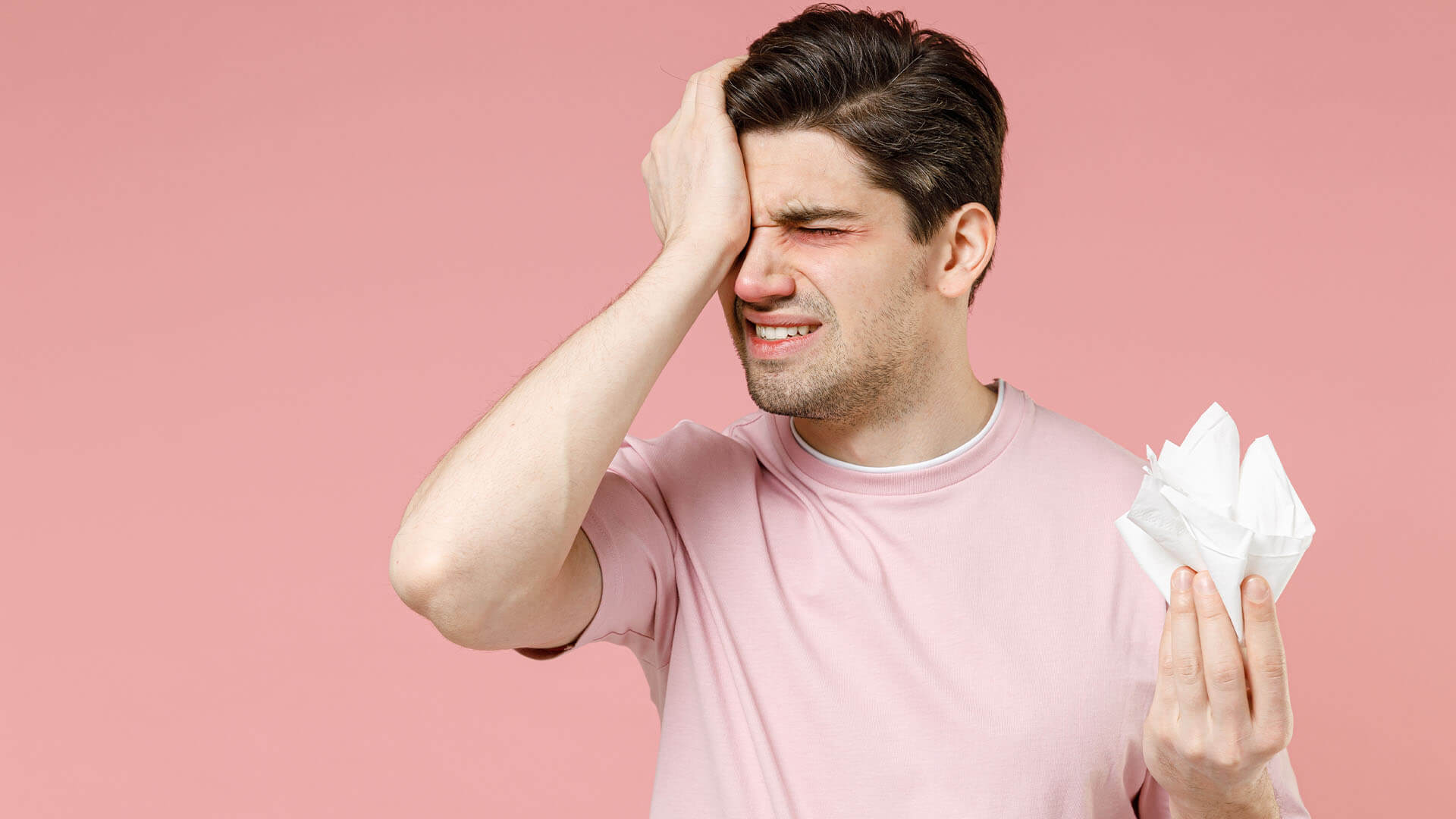According to Allergy UK, hay fever affects around 18 million people in the UK every year. Those experiencing hay fever can experience a peak throughout September, especially on warmer days. Here, Lenstore presents the science behind Hay fever, with remedies from Roshni Patel BSC (Hons) MCOptom on how to ease symptoms.
Recognising the symptoms of hay fever
Hay fever is an allergic reaction to tree, grass or weed pollen. As these types of pollen are released at different times of the year, you may start noticing hay fever symptoms between the beginning of the spring right through to Autumn.
Roshni Patel BSC (Hons) MCOptom notes that rubbing your eyes to find relief may come with risks:
“Rubbing your eyes can be damaging for several different reasons. If there’s a foreign body like an eyelash or a speck of dirt in your eye as well, rubbing it can cause it to scratch the cornea.
“In addition, eye rubbing can cause several eye injuries and diseases. Whilst keratoconus can be genetic, research shows that vigorous eye rubbing can increase your chances of developing it.”
“This is particularly important to recognise in the current climate as rubbing your eyes can easily transfer germs from your hands onto the surface of your eye, resulting in infections and disease.
“If you feel the need to rub your eyes consistently, you should try to avoid doing so and seek treatment for your hay fever to help reduce the discomfort.”
How to relieve hay fever
While there is no set cure for hay fever, it can often be controlled using over-the-counter medication, such as antihistamines or eye drops. However, if symptoms are more severe, you may require prescription medication, like corticosteroids. Here’s what you need to know about the different treatments.
Antihistamines
Antihistamine treatments limit the effect of histamine – the major chemical released in allergic reactions. Available as tablets, sprays and eye drops, antihistamines effectively treat itchy and watery eyes and can also help with nose inflammations. You can use these when the first symptoms of hay fever crop up, or use them preventatively, taking them before heading outdoors when the pollen count (number of pollen grains in one cubic metre of air) is high.
Eye drops
Some eye drops contain an antihistamine, which can effectively relieve red and itchy eyes during hay fever season. But the most widely used products contain the active ingredient sodium cromoglicate, a mast cell stabiliser which helps to relieve symptoms. If you’re a contact lens wearer, we recommend that you ask your optician for more advice. Soft lenses absorb the ingredients of antihistamine eye drops, which may be more of an issue with reusable lenses. Opticians may recommend switching to daily disposables to minimise the risks or advise that you avoid lens wear if the symptoms are severe.
Steroids
Corticosteroids, available as tablets, sprays, or eye drops, have a strong anti-inflammatory effect and are only available on prescription. They are most used to reduce nose inflammations but can also relieve itchy and watery eyes. According to the Midlands Asthma and Allergy Research Association, corticosteroids are particularly effective if you start using them around two weeks before the pollen season starts.
While corticosteroids are very effective, they can have serious side effects, such as glaucoma, cataracts, and damage to the cornea.
Nasal irrigation
Although sneezing and congestion aren’t directly linked to your eyes, nasal irrigation using special tools and a saline rinse can help clear the pollen from your sinuses and reduce the overall symptoms of hay fever, both in your nose and in your eyes.
This is particularly valuable as a precursor to using nasal spray antihistamines.
Hay fever and the eyes
Completely avoiding contact with pollen is a challenge, particularly on gloriously warm summer days. When it gets in your eyes, it can be uncomfortable and itchy.
How to stop eyes stinging from hay fever
Try to stay indoors at times of the day when the pollen count is at its highest (mid-morning and early evening). Avoid any activities that put you into direct contact with pollen, such as lawn mowing or lying in the grass. Consider creating a low allergen garden by swapping out typical hay fever triggering plants and adding natural barriers with hedges and trees. Outside, wear sunglasses with close-fitting shields at the sides, top and bottom, to keep pollen from getting into your eyes.
It’s also wise to avoid bringing pollen into your house. Try keeping windows and doors closed and leaving your pets outside as much as you can. If you have been sitting outside, change your clothes once at home. Clean your furniture with wet cloths to prevent dust and pollen from spreading. If you’re driving, leave windows closed and pick up a pollen filter for the air vents.

















